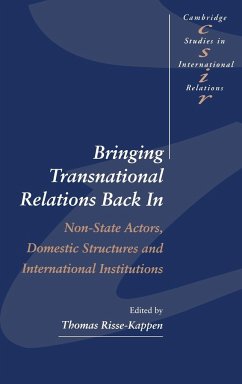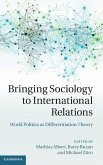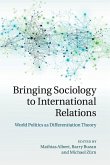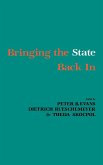Taking a fresh look at the impact of non-state actors on world politics and on the foreign policies of states, this book revives the debate on transnational relations which started in the 1970s. This debate withered away in the face of state-centered approaches, but this book's new approach emphasizes the interaction of states and transnational actors, arguing that domestic structures of the state as well as international institutions mediate the policy influence of transnational actors. Empirical chapters examine the European Economic and Monetary Union, US-Japanese transnational relations, multinational corporations in East Asia, Soviet and Russian security policy, democratization in Eastern Europe, and ivory management in Africa. The book concludes with chapters discussing the theoretical implications of the findings in the empirical studies.
Table of contents:
Part I. Setting the Agenda: 1. Bringing transnational relations back in: introduction Thomas Risse-Kappen; Part II. Case Studies: 2. Transnational relations and the development of European economic and monetary union David R. Cameron; 3. 'Bullying' , 'buying', and 'binding': US-Japanese transnational realtions and domestic structures Peter J. Katzenstein, and Yutaka Tsujinaka; 4. MNCs and developmentalism: domestic structure as an explanation for East Asian dynamism Cal Clark, and Steve Chan; 5. Transnational relations, domestic structures, and security policy in the USSR and Russia Matthew Evangelista; 6. Mechanics of change: social movements, transnational coalitions, and the transformation processes in Eastern Europe Patricia Chilton; 7. Ivory, conservation, and environmental transnational coalitions Thomas Princen; Part III. Conclusions: So What?: 8. Power politics, institutions, and transnational relations Stephen D. Krasner; 9. Structures of governance and transnational relations: what have we learned?; Index.
Hinweis: Dieser Artikel kann nur an eine deutsche Lieferadresse ausgeliefert werden.
Table of contents:
Part I. Setting the Agenda: 1. Bringing transnational relations back in: introduction Thomas Risse-Kappen; Part II. Case Studies: 2. Transnational relations and the development of European economic and monetary union David R. Cameron; 3. 'Bullying' , 'buying', and 'binding': US-Japanese transnational realtions and domestic structures Peter J. Katzenstein, and Yutaka Tsujinaka; 4. MNCs and developmentalism: domestic structure as an explanation for East Asian dynamism Cal Clark, and Steve Chan; 5. Transnational relations, domestic structures, and security policy in the USSR and Russia Matthew Evangelista; 6. Mechanics of change: social movements, transnational coalitions, and the transformation processes in Eastern Europe Patricia Chilton; 7. Ivory, conservation, and environmental transnational coalitions Thomas Princen; Part III. Conclusions: So What?: 8. Power politics, institutions, and transnational relations Stephen D. Krasner; 9. Structures of governance and transnational relations: what have we learned?; Index.
Hinweis: Dieser Artikel kann nur an eine deutsche Lieferadresse ausgeliefert werden.








